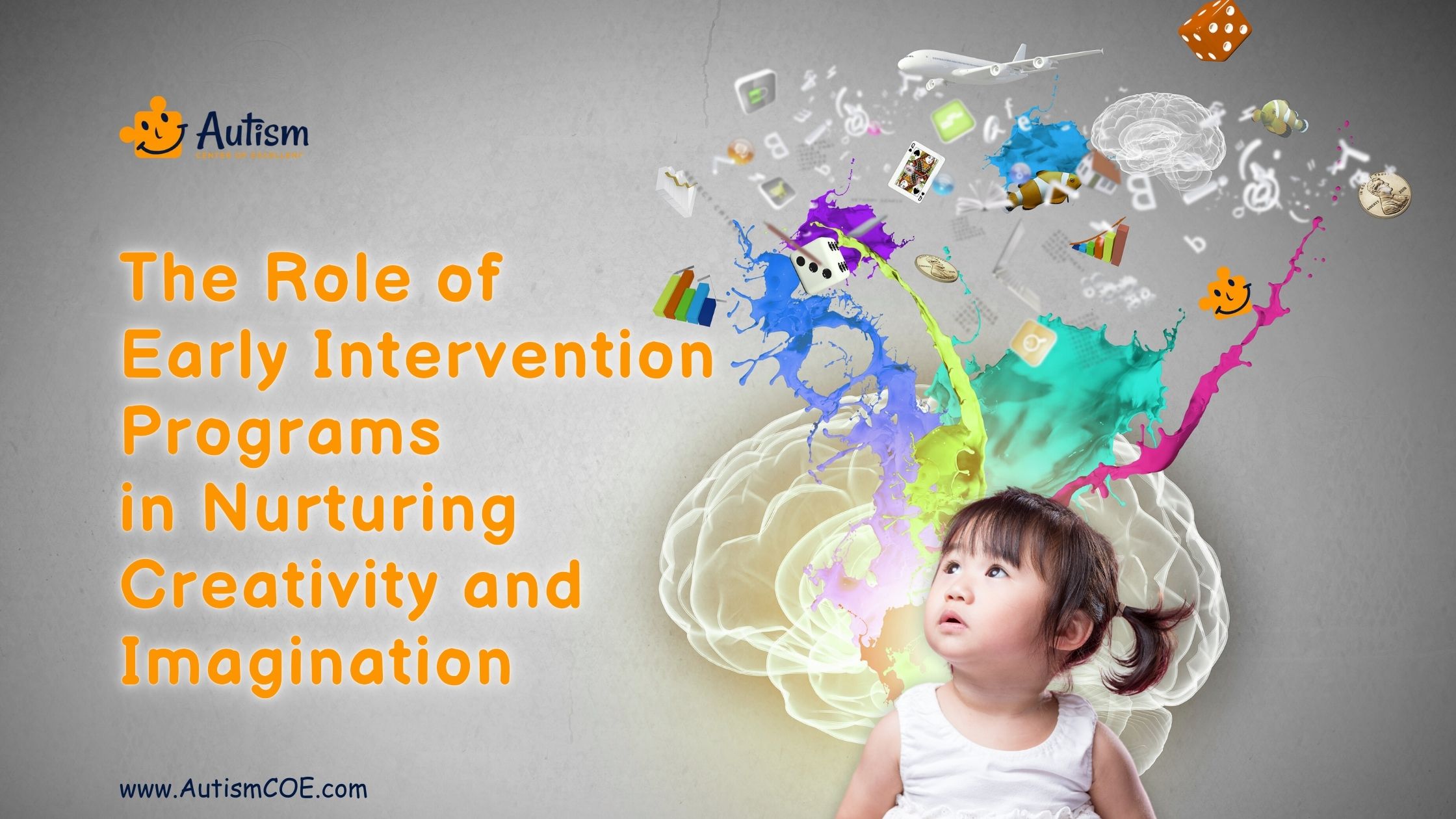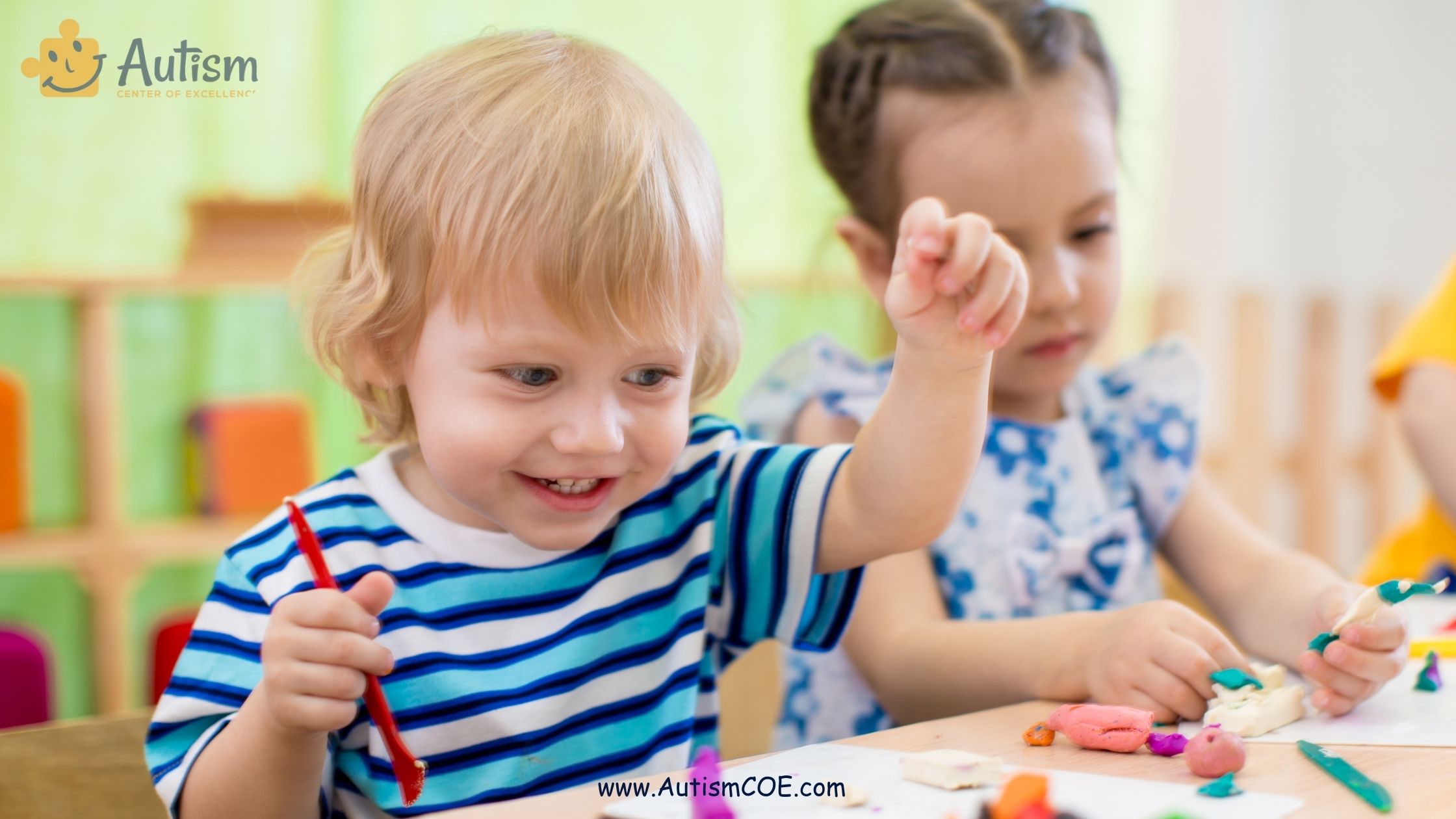Unit 25: The Role of Early Intervention Programs in Nurturing Creativity and Imagination

Raising a child with autism combines moments of wonder with challenges. It makes a strong drive within you toward finding ways to help your child. Early Intervention Programs are at the forefront of this journey and may simply be seen as fertile grounds where creativity and imagination can flourish. These activities form the backbone of encouraging creativity in children with autism to further explore their inner worlds, which in turn develops cognition, emotion, and social interaction. Creativity and imagination are not merely attractive virtues, they are additional skills that can be developed if early intervention is given.
The programs offer structured and supportive environments that cater individually to the needs of each child and lay the basis for creative minds. In this blog, we understand the early intervention on creativity and imagination, along with strategies and activities that will enable parents and caregivers to foster creativity both at home and in educational settings. We are taking a hope-endowed journey into a future full of endless possibilities for our remarkable children.
Autism Early Intervention and Its Relation to Creativity
Early intervention programs around the world contribute much to bringing out creativity in a Child with Autism, mainly through early response to delays in development. In such early intervention programs, the environment is especially shaped in a manner which will afford creativity to thrive through specific activities tailored toward each child’s unique interests and strengths. By integrating creative forms of expression, such as drawing, music, and storytelling, early intervention provides delightful ways in which children can communicate and practice their imaginative skills when words fail.
These programs offer a structured yet flexible framework that allows children to experiment and innovate within a safe space. Consistent routines combined with positive reinforcement build confidence, allowing children the freedom to explore new ideas without fear. Early intervention in nurturing creativity supports the acquisition of other vital cognitive skills necessary for effective problem-solving and critical thinking in children with Autism Spectrum Disorder (ASD) and lays a platform for a lifelong love of learning and discovery.

How to Nurture Creativity in Early Childhood: Techniques and Strategies
In developing creativity in early childhood, especially in children with ASD, it is significant that an environment be set up to further fuel exploration and development of curiosity and expressiveness. The following are some hands-on activities and strategies parents and caregivers can use as a means of creating an atmosphere that will allow creativity to grow:
Embrace Play-Based Learning
Allow the child to play and have fun to stimulate their imagination. Provide various Play Therapy Tools that can be manipulated in several ways to allow them to test different situations and outcomes. Such plays develop problem-solving and thinking creatively, both key aspects of creativity enhancement.
Incorporate Sensory Activities
Sensory Experiences can greatly enhance creativity in early childhood. Finger painting, playing with textured materials, or studying the wonders of nature are all activities that allow children to engage their senses and express themselves in a non-verbal manner-so helpful for kids with autism.
Encourage Artistic Expression
Provide a variety of art materials: crayons, markers, clay, and paints. Do not lead it; allow the children to free-play on their own. Emphasize the process, not the product. This allows them to express thoughts and feelings unique to their being, and it nurtures their creative spirits.
Foster a Curious Mindset
Encourage curiosity in activities–a trip to a museum, nature walks, or reading books on many different levels that prompt the children’s questioning and exploration of interests. This helps to create openness to new ideas and perspectives through the child’s inquisitive nature of the mind.
Create a Safe and Supportive Environment
Let your child be safe and supported in all of their creative explorations. Reward effort, distribute encouraging words, and avoid sharp criticisms. A nurturing environment builds confidence, something very important for creativity to blossom.
Incorporate Daily Routines with Creative Twists
Introduce creativity into daily routines by adding imaginative elements to it. For instance, turn an ordinary cook-up into a storytelling adventure, or on a simple walk, make it playful, like an ‘I Spy’ game with colors and shapes. These little things weave creativity into the fabric of day-to-day living.
Model Creative Behavior
Kids learn from what the adults around them are modeling. The more creative thinking and problem-solving your daily actions can model, the more you share your projects with them, and you discuss how you approach challenges creatively, the more this sets a very strong example and encourages children to follow similar behaviors.
Enjoying Reading?
Join Our Weekly Newsletters!
Subscribe now to stay updated with our latest email updates.

How to Nurture Imagination Skills Through Practical Activities
The development of imagination skills in autistic children is immensely rewarding and opens up avenues of creativity and self-expression. The practical activities that will enable these children to explore their Imaginative Powers can easily be made part of their daily lives. Here are some strategies that parents and caregivers can use to encourage this much-needed aspect in their children:
Storytelling and Role Play
Encourage children to engage in storytelling and role play. Provide them with various costumes, props, and puppets to act out their favorite stories or create new ones. This not only enhances their imagination but also promotes language development and social skills as they navigate different situations and characters.
Sensory Bin Exploration
Prepare sensory bins with sand, rice, or water beads and add small toys or natural items like shells and pebbles for manipulation and exploration. Sensory bins enhance perception and develop imagination since children can create different settings and situations using the items in the bin.
Art and Craft Projects
Set up an art station with various art supplies, including paints, crayons, and recyclable materials. Encourage projects that are open-ended, meaning the process is more important than the product. This allows children to creatively express their thinking and feelings through art while developing their imaginative skills.
Outdoor Adventures
Turn an ordinary walk in the park into a treasure hunt or nature scavenger hunt adventure. Let them imagine they are explorers or detectives who must find hidden treasures or look for clues around them. These games build curiosity and encourage creative imagination during outdoor experiences.
Music and Dance
Introduce children to various forms of music: provide ample time and opportunities for free dance and movement. Music can stimulate imagery and sequences of ideas and feelings. Dance, however, enables children to pretend to be characters or tell stories with their movements in a very active and efficient way to enhance their imaginative abilities.

Benefits of Nurturing Creativity and Imagination in Child Development
Introducing creativity and imagination in the early developmental stage helps a child to have the power to excel in all life dimensions, along with learning important life skills.
1. Cognitive Skill Development
Creativity leads to problem-solving, critical thinking, and adaptability. Such creative work allows a child to brainstorm while working out any problem, and it makes a very strong foundation for academically brilliant times ahead and lifelong learning.
2. Emotional Growth
Imaginative play provides a safe ground for the child to express and understand emotions. It is important for the development of Emotional Intelligence, where the child learns better ways of negotiating their feelings.
3. Social Skills Enhancement
Storytelling and role-playing activities Improve Empathy and Communication Skills. Through simulation of various social situations, children with autism develop an understanding of emotions and social cues that ensure more effective and meaningful interactions.
4. Confidence Building
Encouraging their creativity allows children to express their individuality, which in turn enhances their self-esteem and confidence. This confidence is quite elemental in personality building and opening oneself to new experiences and challenges.
5. Holistic Development
Creativity and imagination are germane in the overall development of a child to become a well-rounded character to handle life’s complexities.

The Role of ABA Therapy in Nurturing Creative Minds
Though Applied Behavior Analysis, or ABA, therapy is most recognized for its systematic methodologies and skills implementations in children with autism, nurturing creativity is an important yet additional function it plays.
Even though ABA is majorly related to interventions on behavior, the doctrine also lays a foundation for creative development that encourages flexibility, adaptability, and exploration. In this light, through employing individual-specific strategies, ABA enables the engagement of children in imagination tasks that trigger their creative faculties.
One of the ways ABA nurtures creativities is in its emphasis on building communication skills. Good communication is extremely necessary for creative expression, and ABA Techniques certainly help children express themselves and explore new ideas. For example, therapists may use role-playing games to enhance social interactions, which encourages inventing scenarios and storytelling, hence enhancing imaginative capabilities.
Also, reinforcement strategies in ABA can be designed to nurture creative thinking by giving rewards for novel ideas and solutions that a child might think of in a non-threatening atmosphere. ABA Therapy nurtures creativity because of problem-solving skills, which are also important in creative thinking.
Structured but flexible learning environments teach children to approach problems from various angles and foster innovative thinking outside the box. This adaptability not only helps a child in creative development but also prepares him for life with successful scenarios on different fronts.
The Incorporation of ABA Therapy Into Early Intervention programs makes the holistic approach toward the development of children with autism respect both structured learning and exploration through creativity for all-rounded and fulfilling growth.

Approaches for Nurturing Creativity and Imagination at Home and School
Supportive and resourceful home and school environments can help foster creativity and imagination in children with autism. Parents can easily help and support imaginative play for the children at home, encouraging them to use various materials such as art supplies, building blocks, and dresses in different ways through open activities.
It creates a special place where children can get into and feel comfortable with. Moreover, joint creative projects, such as craftsmanship or story theatre, foster the relationship between child and parent and enhance your child’s imagination.
Creativity can also be inculcated in school through project-based learning and activities involving collaborative groups, letting children present their thoughts and work together to enhance their creative and social skills. This can also be developed by teachers through the Integration of Technology, such as educational apps or interactive whiteboards, to present new concepts in a manner both dynamic and stimulating for students’ imaginations.
By offering choices in their learning processes, educators empower children to take ownership of their creativity, nurturing an environment where imagination flourishes. In nurturing creativity, both parents and educators play great roles in opening opportunities for these children to rise to their fullest potential.
Frequently Asked Questions & Answer
What is Creative and Imaginative Development in Early Childhood?
Early years of creative and imaginative development are the process in which children, during the tender years of their lives, are involved in playing activities that enable them to investigate ideas, express themselves, and think beyond the ordinary.
This development is crucial as it encompasses a wide range of experiences, from drawing and storytelling to role-playing and building, which help children to understand the world around them and develop problem-solving skills.
Encouragement of these activities Develops Cognition and emotion, opening ways for lifelong learning and innovation.
Why are Creativity and Imagination Important for Children?
Creativity and imagination are vital for children as they help to develop essential life skills such as critical thinking, adaptability, and emotional intelligence. These skills enable children to approach challenges with an open mind and find innovative solutions.
Moreover, engaging in creative activities fosters self-expression and boosts confidence, allowing children to communicate their thoughts and feelings effectively.
By nurturing creativity and imagination, children are better prepared to navigate the complexities of life and grow into well-rounded individuals.
How Can Different Activities Contribute to a Child's Creative and Imaginative Development?
Different activities promote creative and imaginative development through manifold opportunities for investigation and expression. The activities that include drawing, painting, and craft enable children to explore colors and textures, while through role-playing and storytelling, children can create narratives and take up other people’s perspectives.
Building blocks and puzzles develop spatial awareness and problem-solving skills. Each of these activities has a different impact on creativity and imagination, which then develops a holistic approach to development and enhances both cognitive and emotional growth.
How Can We Assess a Child's Creative and Imaginative Development?
It is essential to observe a child’s participation and temporal development in the different activities that concern creative and imaginative development. The initiative of the child in picking up a new idea and playing with it, the media used, and the originality of the work are some of the key indicators observed in monitoring a child’s creative and imaginative development.
Educators and parents can note how children approach tasks, solve problems, and get along with peers during group activities. Regularly encouraging self-reflection and discussion about their creative processes provides insight into developing skills and points out areas where a child might need additional challenge or support.
Conclusion
Early intervention programs provide a vital foundation for holistic development in children with autism by nurturing creativity and imagination. This can be achieved through practical activities like imaginative play and project-based learning, encouraging children to explore their unique perspectives and express themselves meaningfully.
Recognizing the potential of these Early Interventions, parents and educators can offer essential support and resources to create an environment where creativity can thrive. Nurturing these abilities will prepare children for future challenges and opportunities.
Creative thinking not only enhances cognitive-emotional development but also positively impacts social interactions and self-confidence, helping a child grow into a well-rounded individual.
AutismCOE plays a pivotal role in this journey by providing specialized programs that nurture creativity and imagination in children with autism. Through Tailored ABA Therapy and innovative approaches, AutismCOE supports children in reaching their creative potential.
Please Note: The content of this blog is for informational purposes only and should not be considered a substitute for professional medical advice, diagnosis, or treatment. Consult a qualified healthcare professional for personalized guidance tailored to your specific situation.

Bhavika Bhasin
Bhavika Bhasin is the Research and Marketing officer at AutismCOE. She works with children and adults with ASD. Her clinical research includes evaluating various available autism screening and diagnosis methods and their efficacy. She is currently developing a novel screening exam that is indicated to be more accurate than the existing available exams. She is also writes articles papers for various publications.

